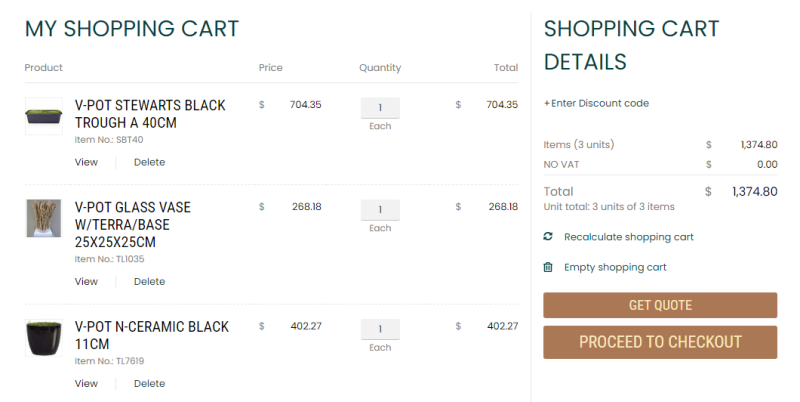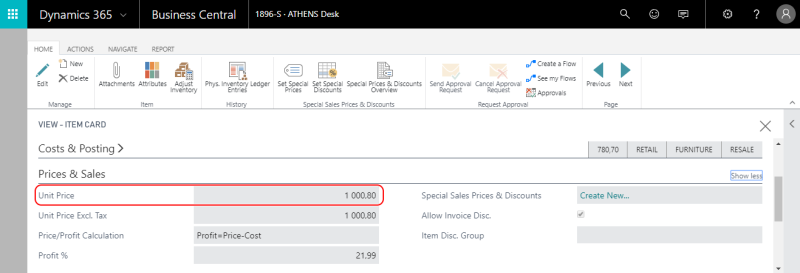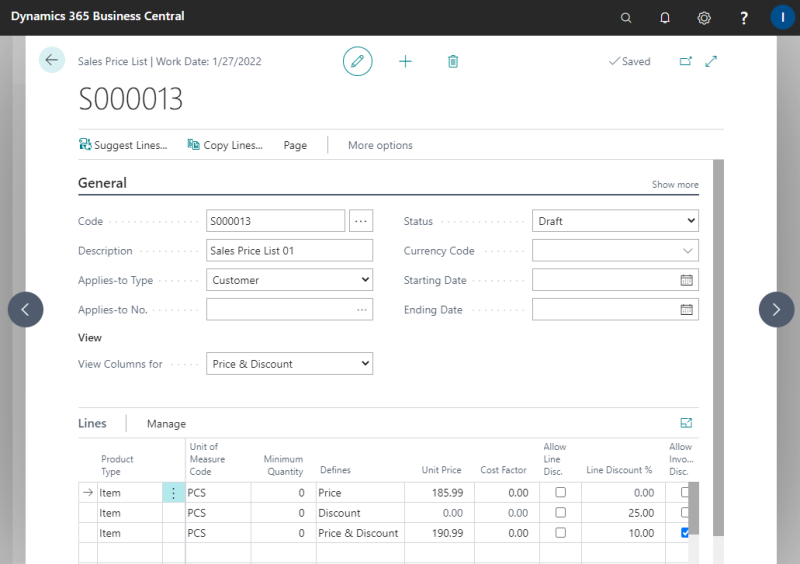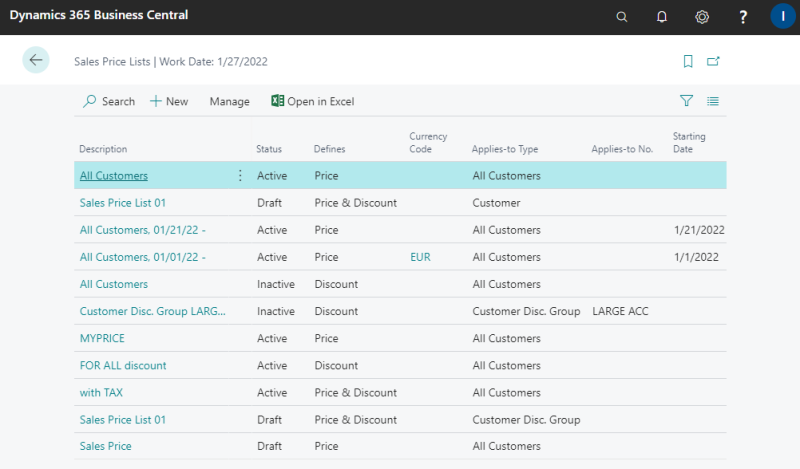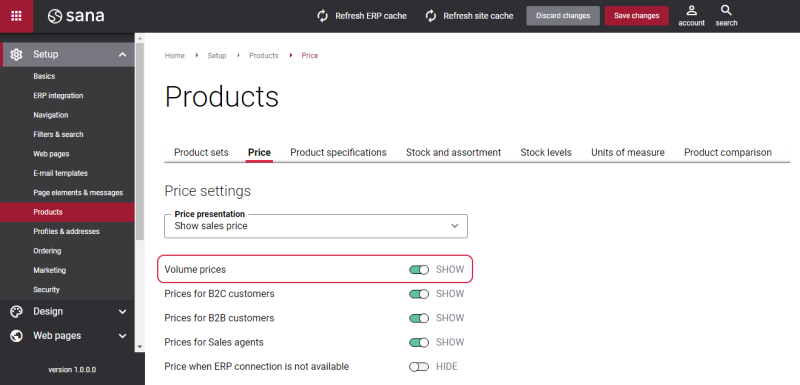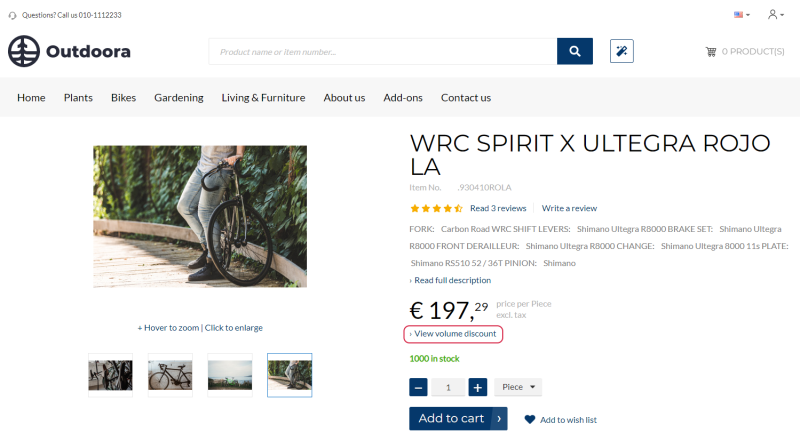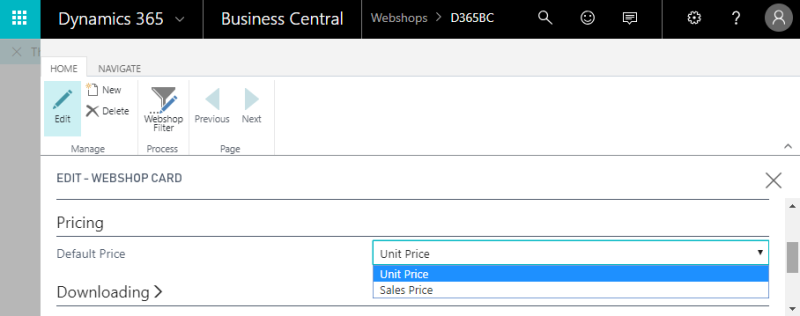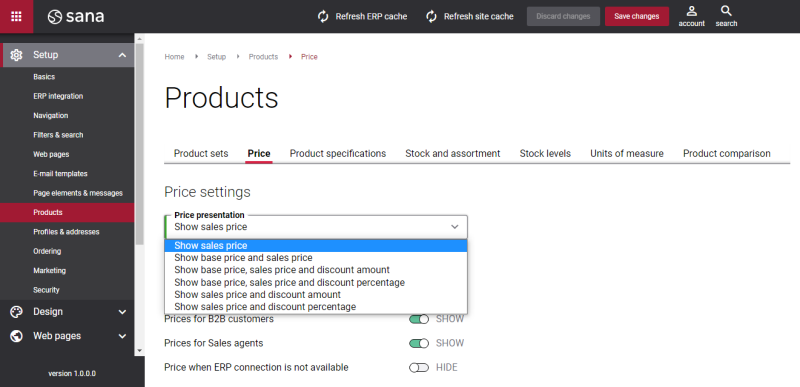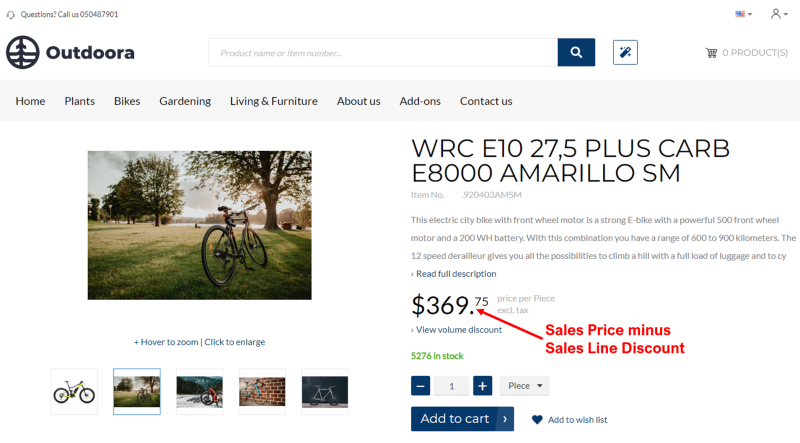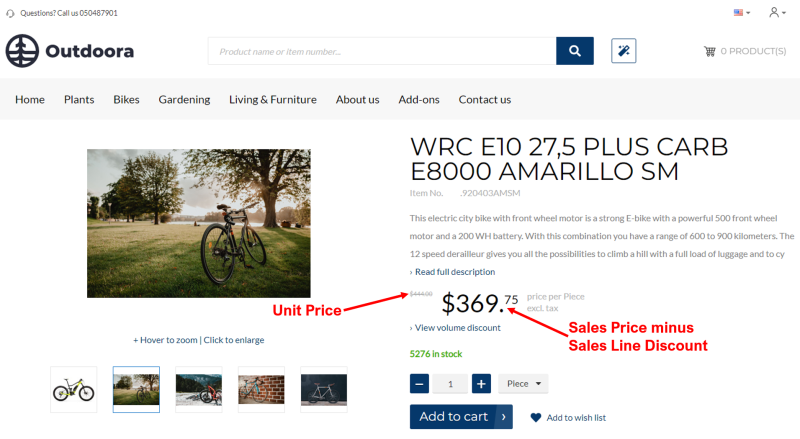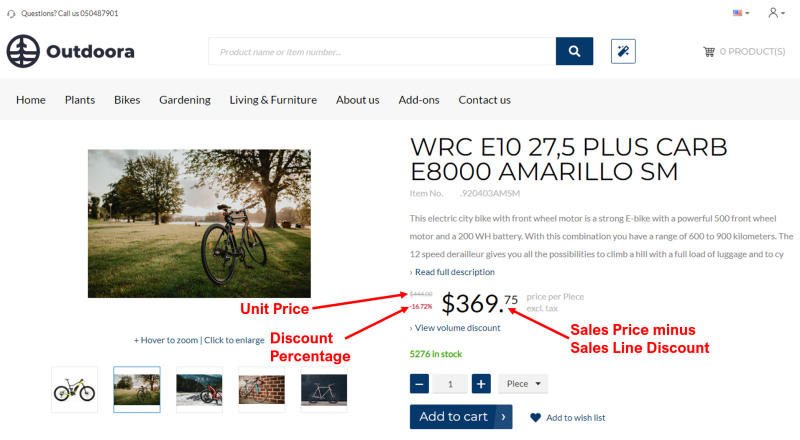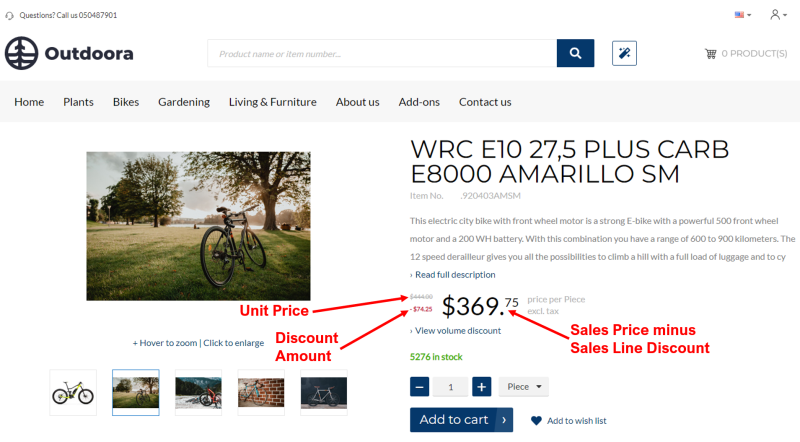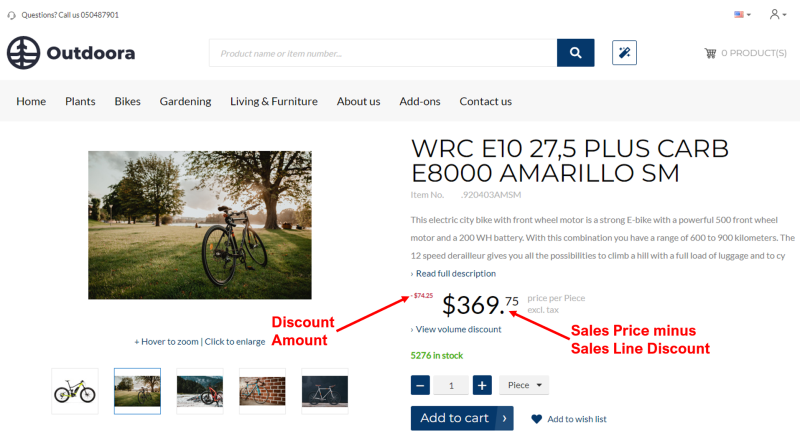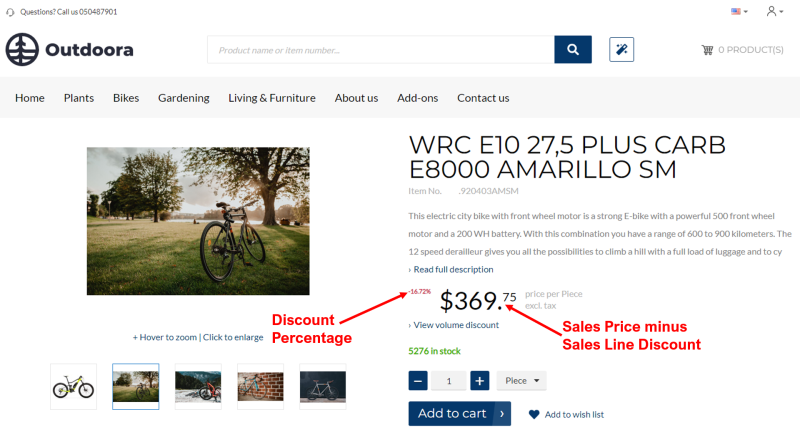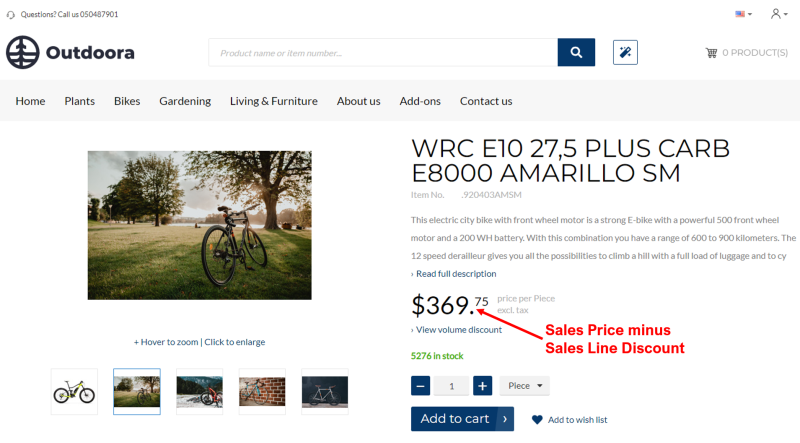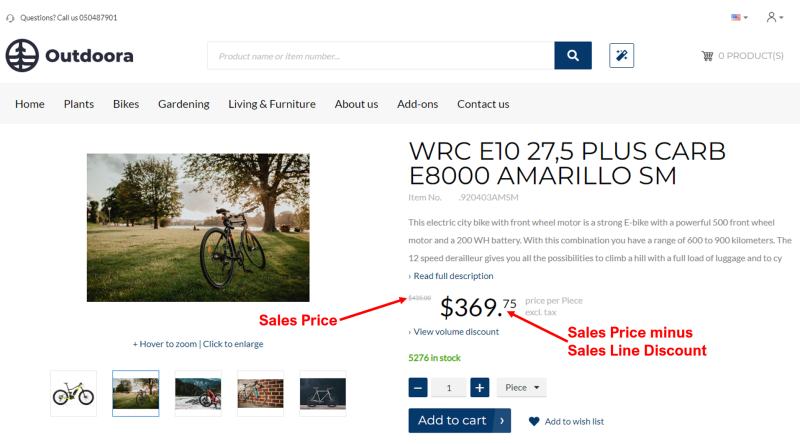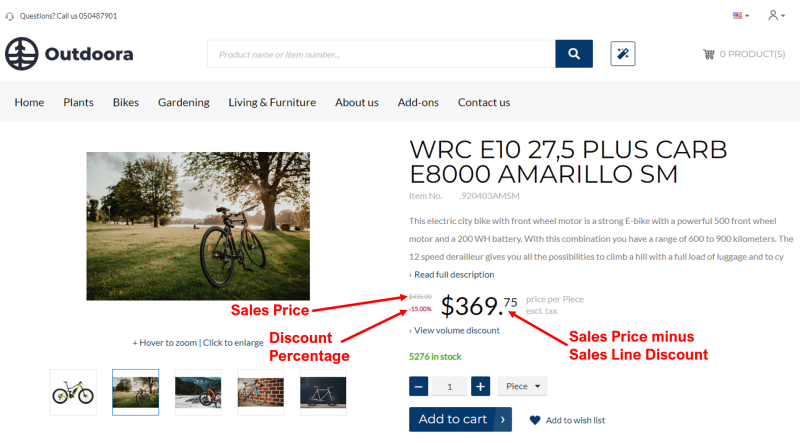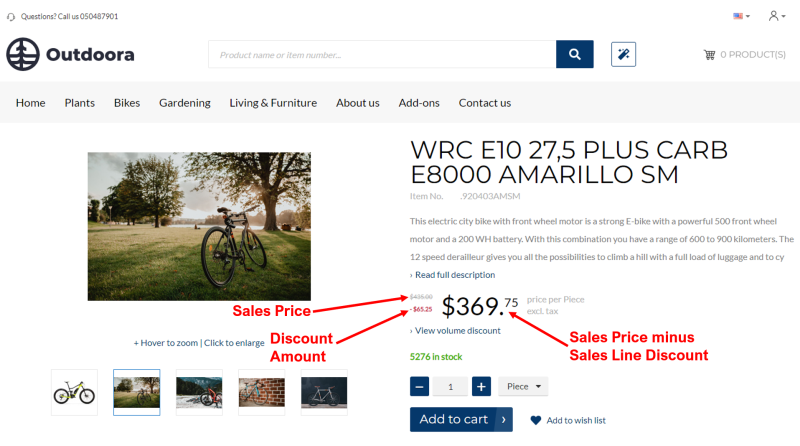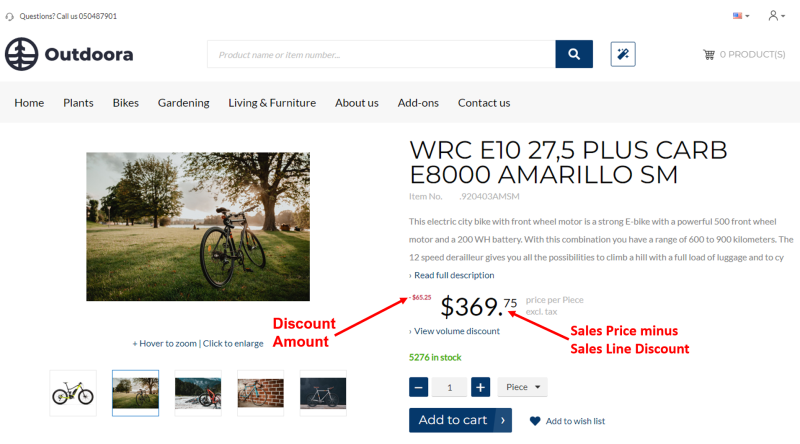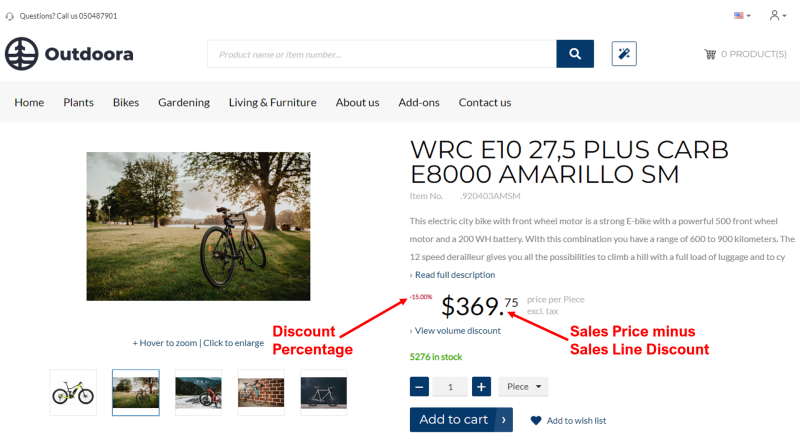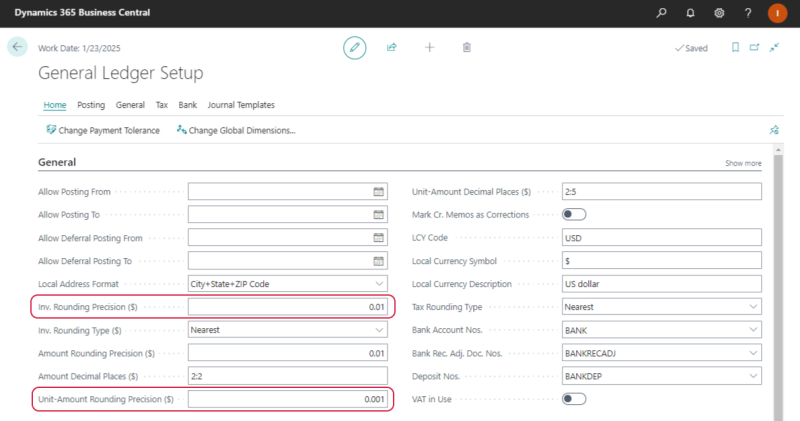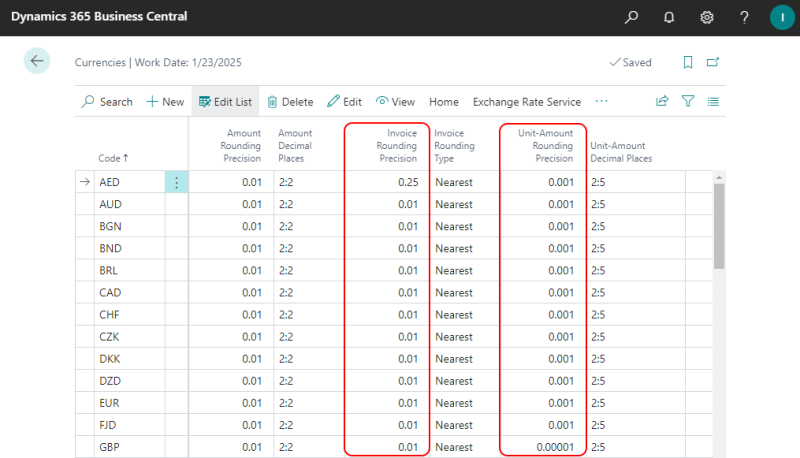New Sales Pricing Experience
Applies to: Sana Commerce Cloud 10.0.9 and higher in Microsoft Dynamics 365 Business Central.
In 2020 release wave 2, Microsoft released new and improved sales pricing experience to set up and manage prices and discounts in Microsoft Dynamics 365 Business Central. New Microsoft Dynamics 365 Business Central customers are already using this new pricing functionality, while existing customers have a choice – they can continue using the old pricing functionality until it is removed or enable the new pricing functionality. Microsoft plans to automatically enable new sales pricing experience for all customers in Update 20.0 (Q2 2022).
Sana also supports new sales pricing experience in Microsoft Dynamics 365 Business Central. Like Microsoft, currently we support both pricing features so that new Microsoft Dynamics 365 Business Central and Sana customers can use them, as well as existing customers who want to move to a new sales pricing experience.
Sana being the ERP integrated e-commerce solution uses pricing logic of Microsoft Dynamics 365 Business Central. This means that all prices are managed and calculated real-time in Microsoft Dynamics 365 Business Central.
In Microsoft Dynamics 365 Business Central you can set up:
-
Unit price - the standard price of an item.
-
Sales price - the sales price of an item for all customers, for a customer discount group, or for a specific customer based on the agreements reached between a customer and a merchant.
-
Sales line discount - the discount that applies to the sales / unit price of an item. It can be set for all customers, for a customer discount group, or for a specific customer based on the agreements reached between a customer and a shop owner.
When a customer creates an order, the price that will be used for an item is based on priority. First, the system checks if there is a sales line discount and applies it to the sales price if it exists, or to the unit price, if there is no sales price. If there is no sales line discount, the system will search for a sales price. If there is no sales price that matches the criteria, the unit price will be used for an item.
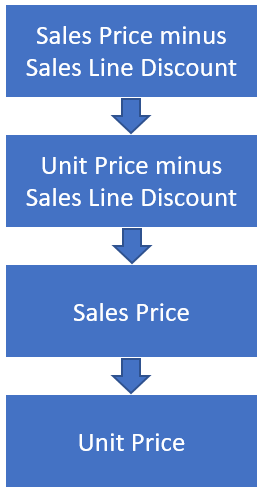
Sana does not have any influence on how prices are calculated. The default Microsoft Dynamics 365 Business Central logic is used. In Sana you can only control which prices and discounts you want to show to your customers in the webshop.
Enable New Sales Pricing Experience
In Microsoft Dynamics 365 Business Central click on the search button  and enter Feature Management. Find the New sales pricing experience feature. To enable the new sales pricing experience in the Enabled for field select All Users. The new sales pricing experience uses price lists to configure sales prices and sales line discounts for items.
and enter Feature Management. Find the New sales pricing experience feature. To enable the new sales pricing experience in the Enabled for field select All Users. The new sales pricing experience uses price lists to configure sales prices and sales line discounts for items.
If you enable the new sales pricing experience, you will not be able to use the old pricing functionality in Dynamics 365 Business Central. When the new sales pricing experience is enabled, it can bring changes to your data and may initiate an upgrade of some database tables. It is recommended to enable and test the new sales pricing experience on a sandbox environment before doing this on a production environment.
Set Up Item Unit Price
Step 1: Open the Item Card.
Step 2: On the Prices & Sales FastTab, enter the Unit Price.
Create a Sales Price List
Price Lists are used in the new sales pricing experience in Dynamics 365 Business Central to set up sales prices and sales line discounts for items.
To create a sales price list, click on the search button  and enter Sales Price Lists.
and enter Sales Price Lists.
You can set up price lists manually or you can use the Suggest Lines action to create new prices for the selected items or item discount groups. If you click Suggest Lines, then in the Price Lines - Create New window you can set filters to select items for which you want to create new price list lines.
Using the Copy Lines action, you can copy existing price list lines between price lists.
You can also see all existing sales price lists in the Sales Price Lists window.
The table below provides the description of the fields necessary to create a price list. You can enter any other required data.
|
Field |
Description |
|---|---|
|
General FastTab |
|
|
Code |
Enter the ID of the price list. |
|
Description |
Enter the description of the price list. |
|
Applies-to Type |
Define whether a sales price or sales line discount is for an individual customer, for a customer price group, customer discount group or for all customers. |
|
View Columns for |
Select the discount type which you need to set up. The following options are available:
Depending on the selected option the necessary fields will be shown in the Lines allowing you to specify either price and discount %, or just price, or just discount % for an item. |
|
Status |
Select the status of a discount. |
|
Currency Code |
Select a currency for which the sales line discount or sales price should be valid. |
|
Starting Date Ending Date |
Use starting and ending dates, if you want a discount to be active for a certain period. |
|
Lines |
|
|
Product Type |
Select the type of item that a sales price or a sales line discount is valid for. That is, either all items, a specific item or an item discount group. |
|
Variant Code |
Select an item variant. |
|
Unit of Measure Code |
Select a unit of measure of an item for which a sales price or sales line discount will be valid. |
|
Minimum Quantity |
Specify the quantity of an item that a customer must purchase to get a discount. |
|
Unit Price |
Enter the sales price of an item. |
|
Line Discount % |
Enter the discount percentage of an item. |
You can also see all price lists configured for a specific item or customer. To see all price lists available for an item, open the necessary item and on the action pane click Prices & Discounts. Then click either Sales Prices or Sales Discounts.
To see all price lists available for a customer, open the necessary customer and on the action pane click Navigate > Sales Price Lists.
For more information about new sales pricing experience refer to the official Microsoft Dynamics 365 Business Central Guide: Record Special Prices and Discounts.
Volume Prices
Using the Minimum Quantity field in the Lines of the sales price list, you can set up volume prices.
Volume pricing is a pricing strategy that allows discounts for bulk purchases. Typically, it is used to give better pricing to customers who purchase larger quantities of products.
Volume prices are shown on a product details page and are triggered in a shopping cart based on the pricing logic in Microsoft Dynamics 365 Business Central. A customer can see pricing offers directly on the product details page, before ordering the product.
Enable Volume Prices
To show volume prices in the Sana webshop, log in to Sana Admin and click: Setup > Products > Price. Enable the option Volume prices.
If the minimum quantity is set for an item in the sales price list in Microsoft Dynamics 365 Business Central and the Volume prices option is enabled in Sana Admin, then in the webshop, on the product details page, a customer will see a link View volume discount under the item price.
Clicking on this link opens the table with volume discounts coming from Microsoft Dynamics 365 Business Central. The volume discounts are shown for the selected unit of measure and product variant, if there are any.
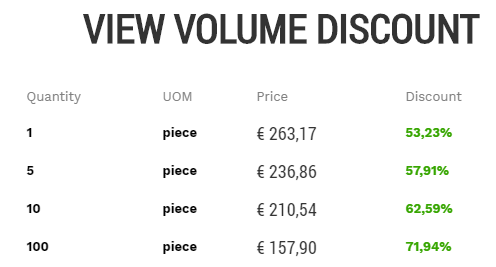
Presentation of Prices and Discounts in the Sana Webshop
Sana is very flexible when it comes to presentation of prices and discounts in the webshop. You are free to show those prices and discounts that you want.
The combination of price settings in Sana Admin and in Microsoft Dynamics 365 Business Central defines how prices and discounts will be shown on the product pages in the Sana webshop.
Set Up the Default Item Price in Microsoft Dynamics 365 Business Central
In Microsoft Dynamics 365 Business Central click on the search button  and enter Webshops. Open the Webshop Card.
and enter Webshops. Open the Webshop Card.
Using the Default Price field, on the Webshop Card, you can choose which price, unit or sales, should be used as the default item price. It depends on your pricing setup in Microsoft Dynamics 365 Business Central. If you set up Sana to show two prices to your customers in the webshop, the price that is selected as the Default Price on the Webshop Card will be strikethrough in the Sana webshop.
Below you can see different scenarios and combinations of price settings, and how prices are presented in the Sana webshop.
Set Up Price Presentation in Sana Admin
In Sana Admin click: Setup > Products > Price. In the Price presentation field, select which item prices and discounts from Microsoft Dynamics 365 Business Central you want to show on the product pages in the Sana webshop.
-
You can choose which item prices must be shown on the product pages. You can show both, unit (base) prices and sales prices, or only sales prices.
-
You can even show discount amount or discount percentage together with the item price.
Below you can see how item prices and discounts are shown in the Sana webshop, depending on the setup in Sana Admin and in Microsoft Dynamics 365 Business Central. It also depends on how item prices are configured in Microsoft Dynamics 365 Business Central.
Show Sales Price (Sana Admin) + Unit Price (Microsoft Dynamics 365 Business Central)
Sales price minus sales line discount (if it is available) is shown for a product. If a sales line discount is not available for an item, then just a sales price is shown.
Show Base Price and Sales Price (Sana Admin) + Unit Price (Microsoft Dynamics 365 Business Central)
Item unit price and a sales price minus sales line discount (or a sales price) are shown for a product. Unit price is a strikethrough price.
Show Base Price, Sales Price and Discount Percentage (Sana Admin) + Unit Price (Microsoft Dynamics 365 Business Central)
Item unit price, a sales price minus sales line discount (or a sales price) and a discount percentage are shown for a product. The discount percentage shows the difference between a unit price and a sales price with the applied sales line discount (or a sales price). If a sales price is not available for an item, then a sales line discount is applied to a unit price. Unit price is a strikethrough price.
Show Base Price, Sales Price and Discount Amount (Sana Admin) + Unit Price (Microsoft Dynamics 365 Business Central)
Item unit price, a sales price minus sales line discount (or a sales price) and a discount amount are shown for a product. The discount amount is the difference between a unit price and a sales price with the applied sales line discount (or a sales price). If a sales price is not available for an item, then a sales line discount is applied to a unit price. Unit price is a strikethrough price.
Show Sales Price and Discount Amount + Unit Price (Microsoft Dynamics 365 Business Central)
Sales price minus sales line discount (or a sales price) and a discount amount are shown for a product. The discount amount is the difference between a unit price and a sales price with the applied sales line discount (or a sales price). If a sales price is not available for an item, then a sales line discount is applied to a unit price.
Show Sales Price and Discount Percentage + Unit Price (Microsoft Dynamics 365 Business Central)
Sales price minus sales line discount (or a sales price) and a discount percentage are shown for a product. The discount percentage shows the difference between a unit price and a sales price with the applied sales line discount (or a sales price). If a sales price is not available for an item, then a sales line discount is applied to a unit price.
Show Sales Price (Sana Admin) + Sales Price (Microsoft Dynamics 365 Business Central)
Sales price minus sales line discount is shown for a product. If a sales line discount is not available, then just a sales price is shown.
Show Base Price and Sales Price (Sana Admin) + Sales Price (Microsoft Dynamics 365 Business Central)
Item sales price and a sales price minus sales line discount are shown for a product. Sales price is a strikethrough price.
If a sales price is not available for an item, then a unit price and a unit price with the applied sales line discount are shown. A unit price is a strikethrough price, since an item does not have a sales price.
If a sales line discount is not available for an item, then only a sales price is shown for a product.
Show Base Price, Sales Price and Discount Percentage (Sana Admin) + Sales Price (Microsoft Dynamics 365 Business Central)
Item sales price, a sales price minus sales line discount and a discount percentage are shown for a product. The discount percentage shows the difference between a sales price and a sales price with the applied sales line discount. Sales price is a strikethrough price.
If a sales price is not available for an item, then a unit price, a unit price with the applied sales line discount and a discount percentage are shown. A unit price is a strikethrough price, since the item does not have a sales price.
If sales line discount is not available for an item, then only a sales price is shown for a product.
Show Base Price, Sales Price and Discount Amount (Sana Admin) + Sales Price (Microsoft Dynamics 365 Business Central)
Item sales price, a sales price minus sales line discount and a discount amount are shown for a product. The discount amount shows the difference between a sales price and a sales price with the applied sales line discount. Sales price is a strikethrough price.
If a sales price is not available for an item, then a unit price, a unit price with the applied sales line discount and a discount amount are shown. A unit price is a strikethrough price, since the item does not have a sales price.
If a sales line discount is not available for an item, then only a sales price is shown for a product.
Show Sales Price and Discount Amount (Sana Admin) + Sales Price (Microsoft Dynamics 365 Business Central)
Sales price minus sales line discount and a discount amount are shown for a product. The discount amount shows the difference between a sales price and a sales price with the applied sales line discount.
If a sales price is not available for an item, then a unit price with the applied sales line discount and a discount amount are shown. In this case, the discount amount shows the difference between a unit price and a unit price with the applied sales line discount.
If a sales line discount is not available for an item, then only a sales price is shown for a product.
Show Sales Price and Discount Percentage (Sana Admin) + Sales Price (Microsoft Dynamics 365 Business Central)
Sales price minus sales line discount and a discount percentage are shown for a product. The discount percentage shows the difference between a sales price and a sales price with the applied sales line discount.
If a sales price is not available for an item, then a unit price with the applied sales line discount and a discount percentage are shown. In this case, the discount percentage shows the difference between a unit price and a unit price with the applied sales line discount.
If a sales line discount is not available for an item, then only a sales price is shown for a product.
Price Rounding Precision
Applies to: Sana Commerce Cloud 10.0.70 and higher in Microsoft Dynamics 365 Business Central.
If you need to round item prices, you can use price rounding precision in Microsoft Dynamics 365 Business Central. It determines the fixed number of decimal places to which an item price is rounded. For example, if an item price is 5.758 $, it can be rounded to 5.76 $.
This functionality is especially useful for merchants who sell small components that are used in construction or repair, such as screws, bolts, nuts, etc. which prices are cheap, however these items are usually bought in large quantity, therefore the rounded item price has a great influence on the total order amount.
Configure Price Rounding Precision
Sana Commerce Cloud supports:
-
Invoice Rounding Precision
-
Unit-Amount Rounding Precision
These are two standard options in Microsoft Dynamics 365 Business Central.
In Microsoft Dynamics 365 Business Central open the General Ledger Setup window. On the General FastTab, use the Inv. Rounding Precision ($) and Unit-Amount Rounding Precision ($) fields to specify the size of the interval used to round item prices. This is the default setup for both options.
In Microsoft Dynamics 365 Business Central the price rounding precision can be configured per currency. Open the Currencies window and specify rounding precision for the required currencies.
Choose Price Rounding Precision for Your Webshop
In Microsoft Dynamics 365 Business Central click on the search button  and enter Webshops.
and enter Webshops.
On the Webshop Card, on the Pricing FastTab, you can choose which rounding precision to use for the Sana webshop. The available options are:
-
Invoice Rounding Precision – This option is set by default. It allows to display the item price with two decimal places in the Sana webshop.
-
Unit-Amount Rounding Precision – This option allows to display the item price with three and more decimal places in the Sana webshop.
The option you select will be used for all item prices in the Sana webshop. Only the totals in the shopping cart and sales documents are always shown with two decimal places using invoice rounding precision, regardless of the selected option on the Webshop Card.
